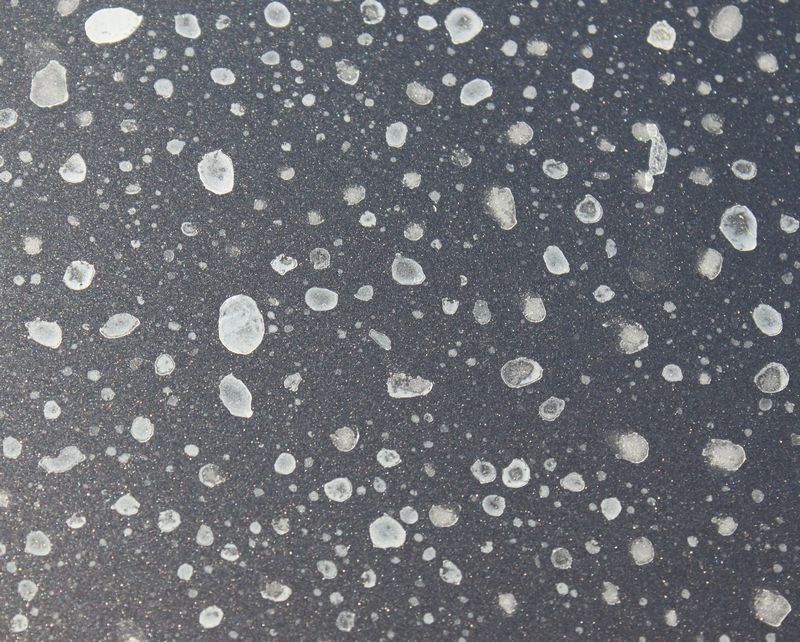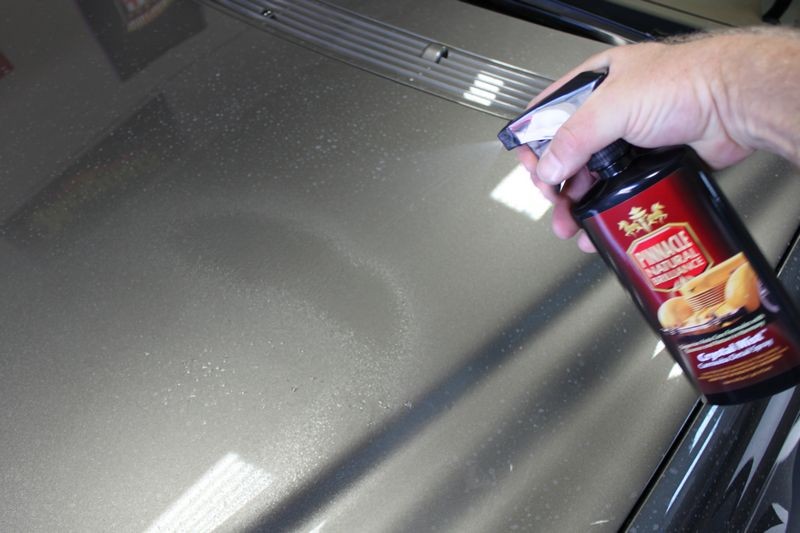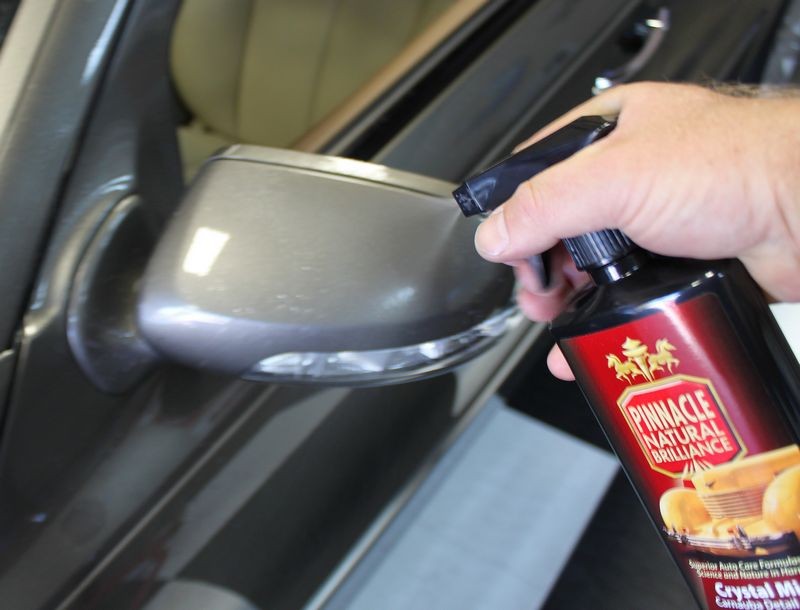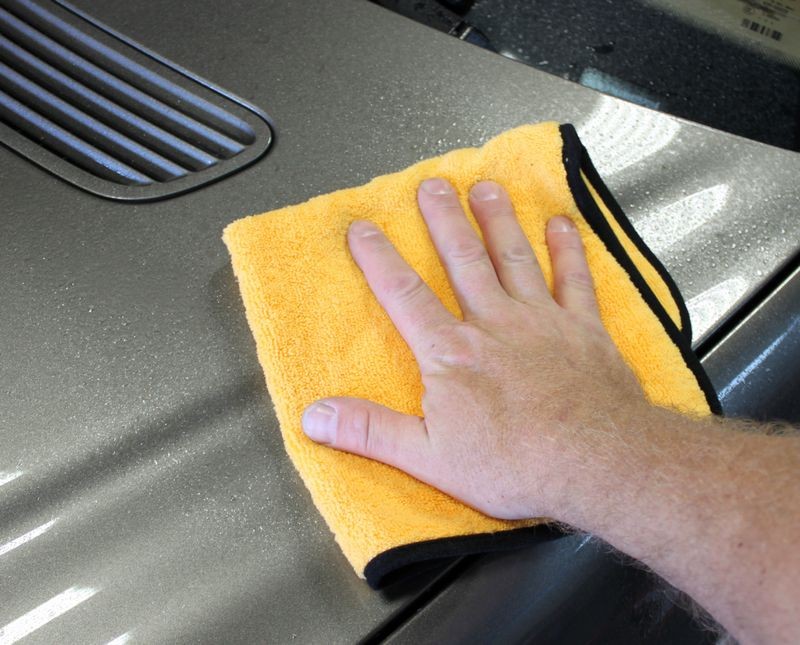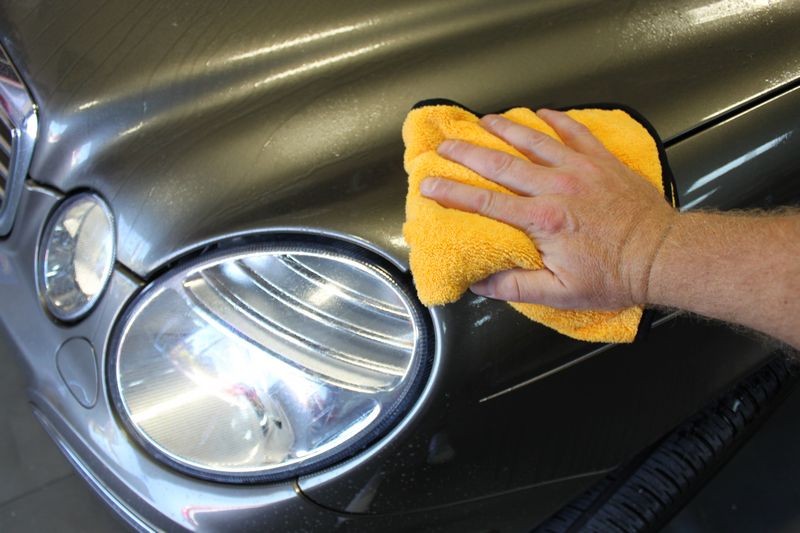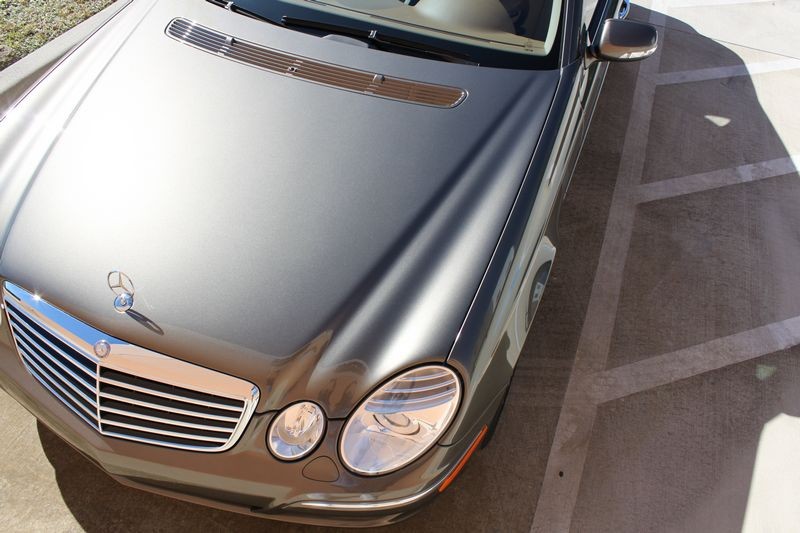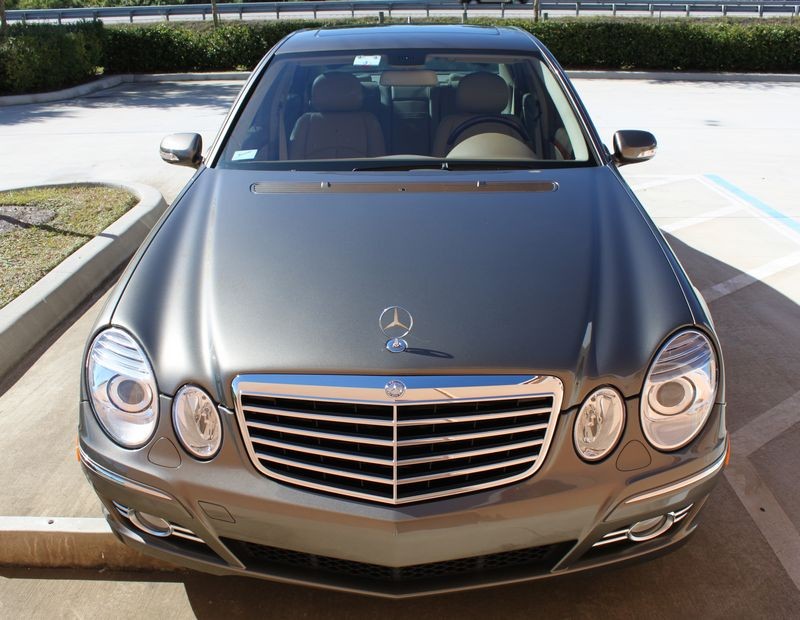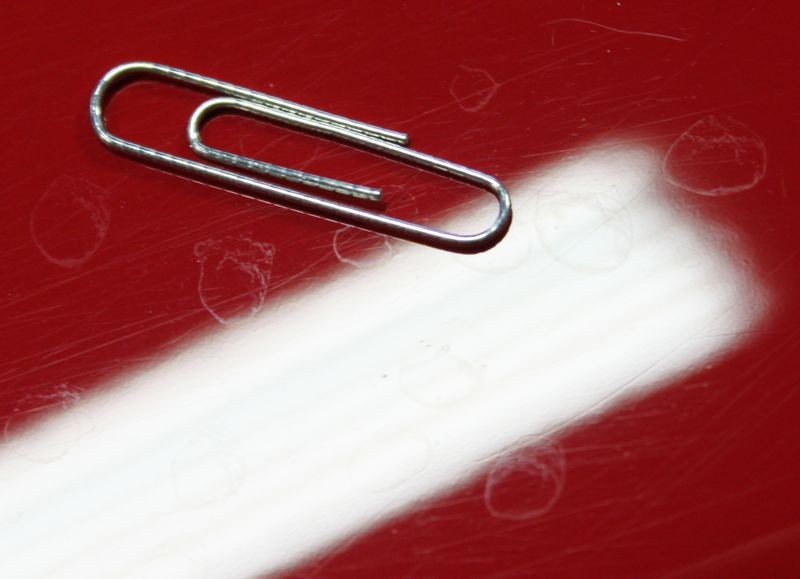More pictures of water spots and remedies...
Just by chance, there's a rental car in the parking lot which also has water spots all over the finish.
These water spots look like they're
established water spots, that every time it rains, or a sprinkler goes off, the water pools in the same place giving any corrosive substances repeated opportunity to etch into the paint.
Visually, I can tell the paint is likely etched in this instance but I won't know till I get the surface clean. The first step is to wash or wipe the finish, in this instance I'm going to repeat wiping process I used on the Mercedes-Benz with a spray detailer.
After wiping the paint clean, there are water spot imprints remaining in the paint.
To remove these
and use the least aggressive product to get the job done I'm going to use a light paint cleaner with a microfiber applicator pad to gentle clean the paint.
If you want to take some of the work out of the cleaning step as an option you can use a machine polisher to apply and work the paint cleaner, this can save a lot of elbow grease and speed up the process especially if the water spots are over the entire car.
If you opt to machine apply the paint cleaner and you're starting with a clean, dry pad, be sure to prime the pad by spreading the paint cleaner over the entire face of the pad, by doing this 100% of the face of the pad will be working for you from the very first moment you turn the polisher on and begin buffing.
Remove the paint cleaner residue by wiping gently using a fresh, clean microfiber towel and then apply a coat of wax or paint sealant as the paint cleaner will effectively remove everything off the surface including any previously applied wax or paint sealant.
In keeping with the philosophy of using the least aggressive product to get the job done, if washing or wiping the paint doesn't remove the water spots the next step would be using a light paint cleaner. If the light paint cleaner didn't work you could then test a light finishing polish and if that wasn't working fast enough and/or effectively enough then you could try a more aggressive product. The goal being to remove the water spots using the least aggressive product and by doing so leaving the most amount of paint on the body panels to last over the service life of the car.
Water Spots and Sprinkler Water Spots Successfully Removed
One bit of advice... try to avoid parking near sprinklers when their placement is known... in the example of the Mercedes-Benz, the water spots simply wiped off; I have seen instances of Sprinkler Water Spots that have etched round craters into clear coat paints and removing these Type II Water Spots can be not only time consuming but it will require you to remove a
measurable amount of the clear layer in order to completely remove the spots.






